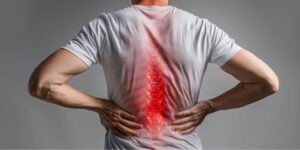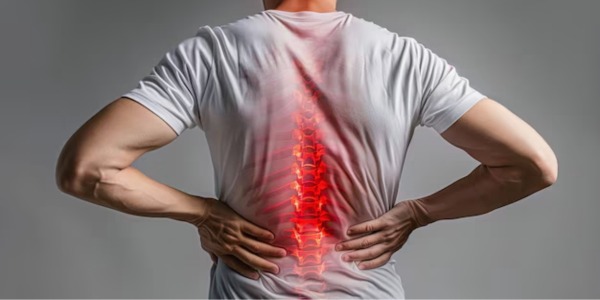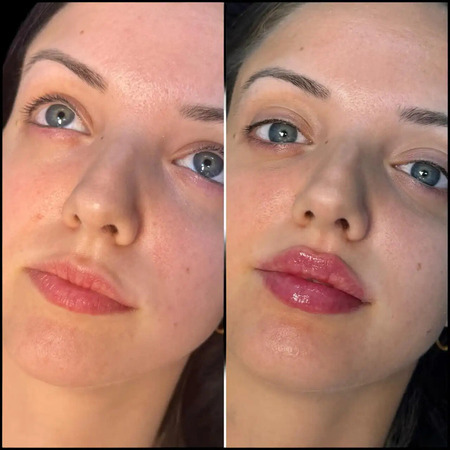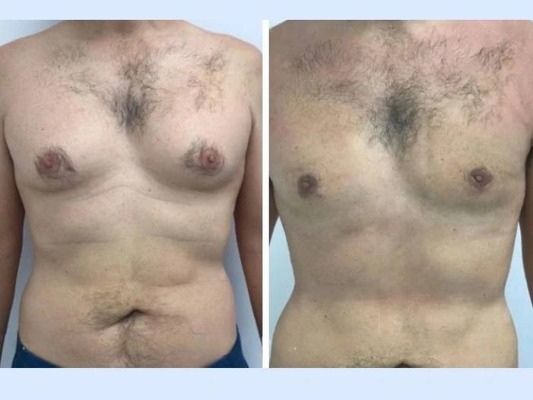(Dr. Amit Shridhar, Internationally Trained Endoscopic Spine Surgeon, HOD, Dept. of Spine Surgeries & Rehabilitation, Sant Parmanand Hospital, New Delhi )
Common Lumbar Disc Degeneration Symptoms You Should Never Ignore
Many adults over 40 experience lumbar disc degeneration, a condition that often starts with small easy-to-miss hints. It progresses over time, with mild signs that can turn into bigger problems if not addressed.
Recognizing Early Warning Signs of Disc Degeneration
The first signs often show up as particular pain patterns and difficulties with movement:
- Ongoing Lower Back Pain: Activities often make this pain worse. Studies show walking increases pain for 60.1% of cases, sitting does the same for 53.4%, bending affects 49.7%, and standing impacts 43.6%.
- Stiffness in the Morning: Moving after waking up can feel hard but tends to get better within 30 minutes of activity.
- Pain Goes Away When Lying Down: Back pain eases up when lying down or reclining.
- Spreading Pain: Pain may move from the lower back to areas like the buttocks, thighs, or calves, which could signal sciatica.
- Numbness or Tingling: People may feel strange sensations in their legs that appear and disappear at first.
Lumbar disc degeneration often causes pain that spreads into the legs, a condition called sciatica. This happens when the damaged disc presses on nearby nerve roots. That pressure triggers pain along the nerve’s path.
Understanding Lumbar Degenerative Disc: Causes and Progression
Certain movements or positions might make the pain from a lumbar degenerative disc feel worse. To see why, it helps to learn how the spine changes as we age.

Intervertebral discs work like cushions between the vertebrae in the spine. Each disc is made of two parts:
- A sturdy outer ring called the annulus fibrosus.
- A softer, gel-like center known as the nucleus pulposus.
As people age and their bodies endure wear and tear spinal discs experience noticeable changes:
| Age-Related Changes in Spinal Discs | Impact on Function |
| Water content at birth | Approximately 80% |
| Water content in older adults | Can drop to 70% or lower |
| Disc height | Decreases by 1-3mm per decade after age 40 |
| Shock absorption capacity | Significantly reduced with age |
| Disc flexibility | Becomes more rigid over time |
Healthy lifestyle changes can play a key role in slowing the progression of Lumbar Degenerative Disc Disease. To prevent and catch it, recognizing your own personal risks is key.
Risk Factors for Accelerated Disc Degeneration
While aging is the primary factor in disc degeneration, several elements can accelerate this process:
- Age: Becomes more noticeable past 40.
- Genetics: A family history has a big effect.
- Occupation: Jobs involving heavy lifting or sitting for long hours.
- Smoking: Cuts blood supply to discs speeding up wear and tear.
- Obesity: Puts extra weight on lumbar discs.
- Previous Injury: Past injuries may kickstart or worsen degeneration.
Understanding these factors can help you take preventive steps and know when it’s time to consult a doctor.
Effective Lumbar Disc Degeneration Treatment Options
If treating lumbar disc degeneration, patients may choose between non-surgical methods and surgeries. Treatments go step by step starting with simpler options.
Conservative Management
Most patients start treatment with non-surgical methods:
- Physical Therapy: Specific exercises help build strength in the back and core.
- Medication: Doctors often recommend painkillers or anti-inflammatory drugs to ease discomfort.
- Lifestyle Changes: Managing weight, improving posture, or quitting smoking may play a role in reducing symptoms.
- Injections: Corticosteroid shots may offer short-term pain relief.
When Lumbar Laminectomy Surgery Becomes Necessary
Doctors suggest lumbar laminectomy surgery if other treatments fail. Surgeons take out part of the vertebra to reduce nerve pressure.
The success rate of Lumbar Laminectomy Surgery is about 90% when skilled surgeons perform it. Around 75% of patients report being satisfied with the outcomes. Recovery happens in stages:
- Patients stay in the hospital for 1 to 3 days after surgery.
- Resuming daily activities can take anywhere from 4 to 6 weeks.
- Physical therapy helps rebuild strength and improve movement.
- Follow-up visits are needed to check on recovery.
Other surgical techniques include:
- Discectomy using invasive methods
- Spinal fusion surgery
- Replacing damaged discs with artificial ones
Why Sant Paramanand Hospital is the Best Spine Treatment Hospital in Delhi
Sant Paramanand Hospital ranks as the best spine treatment hospital in Delhi, offering advanced solutions for patients with spine issues. It provides complete care to address lumbar disc problems and excels in multiple areas of spine treatment, ensuring patients receive expert guidance and long-term relief.
Advanced Spine Treatment in Delhi NCR at Sant Paramanand Hospital
Sant Paramanand Hospital provides:
- Advanced machines to diagnose with accuracy
- A dedicated spine unit staffed by experts
- Full rehabilitation services for patients
- A focus on creating tailored treatment plans
Specialized Back Pain Treatment Delhi Patients Trust
People across NCR come to this hospital known for its top-notch spine care and invasive treatments. The process they follow includes:
- A detailed checkup to find the actual source of pain
- Trying non-surgical methods as the first choice
- Offering advanced surgeries when needed
- Designing recovery plans that fit each patient
Benefits of Minimally Invasive Spine Surgery Delhi Specialists Offer
Doctors here focus on using new less invasive methods that give patients these advantages:
- Tiny cuts
- Minimal tissue harm
- Lesser blood loss
- Quicker healing time
- Fewer chances of infection
- Shorter time in the hospital
Consulting the Best Spine Doctor in Delhi: When and Why
Dr. Amit Shridhar, known as a top spine specialist in Delhi, focuses on handling tough lumbar disc degeneration cases. He mixes medical expertise with kindness to ensure patients get the best results.
What to Expect When Visiting a Spine Specialist Delhi
When you meet the specialist, you can count on:
- Review your detailed medical history.
- Perform physical tests to check neurological health.
- Talk about symptoms and how they affect your daily life.
- Look at past treatments and see how well they worked.
- Discuss the results from diagnostic imaging.
- Offer treatment plans that match your specific needs.
Visiting the best spine doctor in Delhi can guide you in choosing treatment plans for degenerative disc disease. Getting help early matters if you notice:
- Pain that does not improve after two weeks
- Symptoms that get worse even with rest and basic medicines
- Tingling, numbness, or weak legs
- Loss of control over bladder or bowel (this needs quick attention)
Conclusion: Taking Action for Spine Health
Spotting early signs of lumbar disc degeneration helps you take action . Though it’s a natural part of aging, with the right care, its effects on your daily life can be controlled.
If you notice symptoms of lumbar disc issues, think about visiting specialists at Sant Paramanand Hospital. Doctors like Dr. Shridhar offer expert guidance to help patients feel better and get back to their usual routines.
Taking action often improves results and might save you from needing more serious treatments later. Don’t shrug off ongoing back pain as just a part of getting older – it may be your body’s way of asking for medical help.
To book an appointment or consultation, reach out to Sant Paramanand Hospital. This top spine care center in Delhi NCR focuses on patient care and offers advanced treatments to support better spine health.



